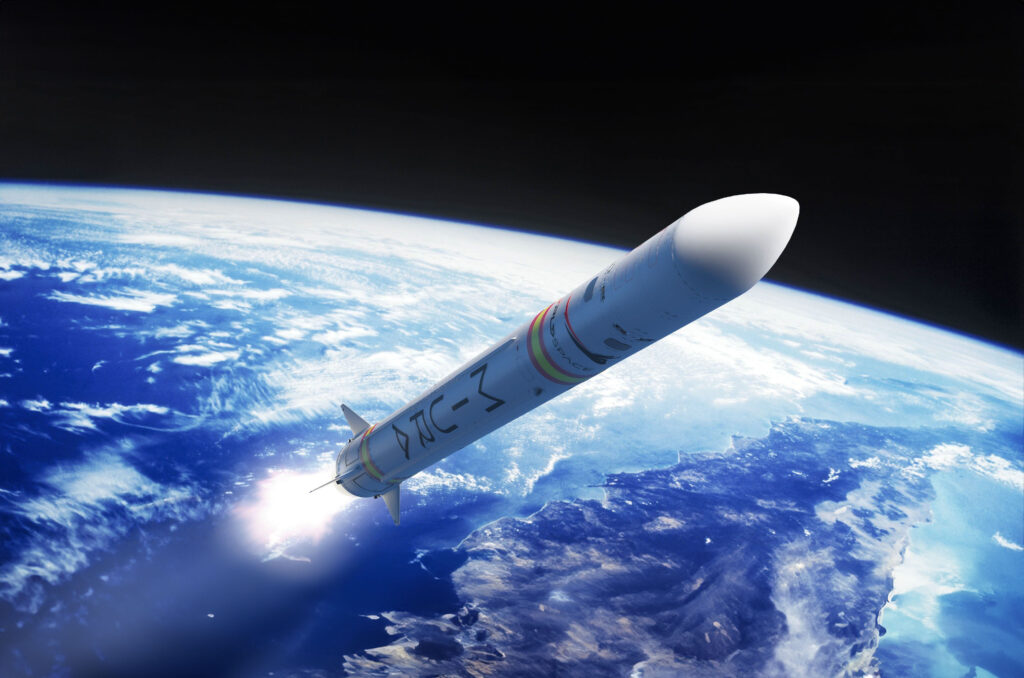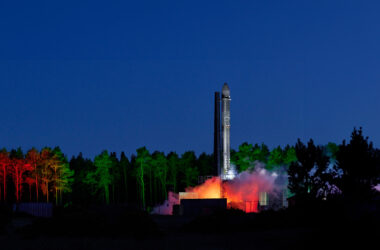PLD Space’s Miura-1 rocket launched from the El Arenosillo Test Center in Huelva, Spain, marking a practical advancement in European space capabilities. This event is a big step forward for Europe’s reusable rocket technology.
This event was Europe’s first successful launch of a reusable suborbital rocket and signified a monumental stride for European space exploration. Amidst the competitive global space race, Europe has carved its niche, and the Miura-1 marks another step forward in the continent’s evolving Space tech capabilities.

Miura-1 stands at the same height as a three-storey building; it is a single-stage rocket designed with reusability at its core. It boasts a 100-kilogram payload capacity, and its inaugural flight carried an experiment from the German Center of Applied Space Technology and Microgravity. This mission, though suborbital, provided invaluable insights that will inform the development and operation of future orbital flights.
Previous attempts to launch have been thwarted, one by high-altitude winds and another by a technical glitch involving the early release of umbilical cables. The atmosphere at the mission control was electric, a mix of anticipation and hope. As the rocket ascended, cheers and congratulations filled the air at mission control. The Miura-1, though not reaching its target altitude, performed admirably, instilling confidence in the team and the technology.
Technical Specifications of Miura-1
Miura-1, developed by PLD Space, is a suborbital recoverable launch vehicle, marking a significant milestone in Europe’s space exploration endeavours. The rocket, with a height of 12.7 meters and a diameter of 0.7 meters, is powered by a single TEPREL-B engine. This engine is fueled by liquid oxygen and kerosene, boasting a maximum thrust of 30.2 kN and a burn time of 122 seconds. Miura-1 is designed to carry a payload of 100 kilograms to a suborbital apogee of 150 kilometres.

The rocket’s recovery system is one of its defining features. Equipped with both engine-powered descent and parachute systems, Miura-1 is designed to be recovered from the ocean post-flight, underscoring its reusability. This feature underscores PLD Space’s commitment to sustainable space exploration and positions Europe at the forefront of global innovations.
The successful launch of Miura-1 is more than a company milestone; it is a continental achievement. Europe’s space ambitions, though robust, have faced challenges. The retirement of the Ariane 5 left a noticeable gap in heavy mission capabilities. The delay of Ariane 6, technical issues grounding Vega-C, and restricted access to Russia’s Soyuz compounded these challenges.
PLD Space CEO Raul Torres said, “This is just the beginning.” The company is poised for significant strides with plans to triple the workforce and an ambitious roadmap ahead. The Miura-5, an orbital launcher, is on the horizon, with potential launches as soon as 2024 or 2025.
The Miura-1’s launch signifies more than a technical achievement; it underscores Europe’s steady progression in space exploration. Every component of the Miura-1 is a showcase for the innovation and determination embedded in PLD Space and echoes a broader European initiative. Looking ahead, the Miura-1 represents a natural step forward in Europe’s ongoing journey to enhance its space capabilities, emphasizing innovation and adaptability over challenges.
TLDR:
- PLD Space successfully launched Miura-1, marking Europe’s entry into the era of private, reusable rockets.
- Miura-1 is equipped with a recovery system for reusability, designed to carry up to 100kg payloads to a suborbital apogee of 150km.
- The launch signifies a significant stride for European space exploration, filling the gap left by the retirement of Ariane 5.







